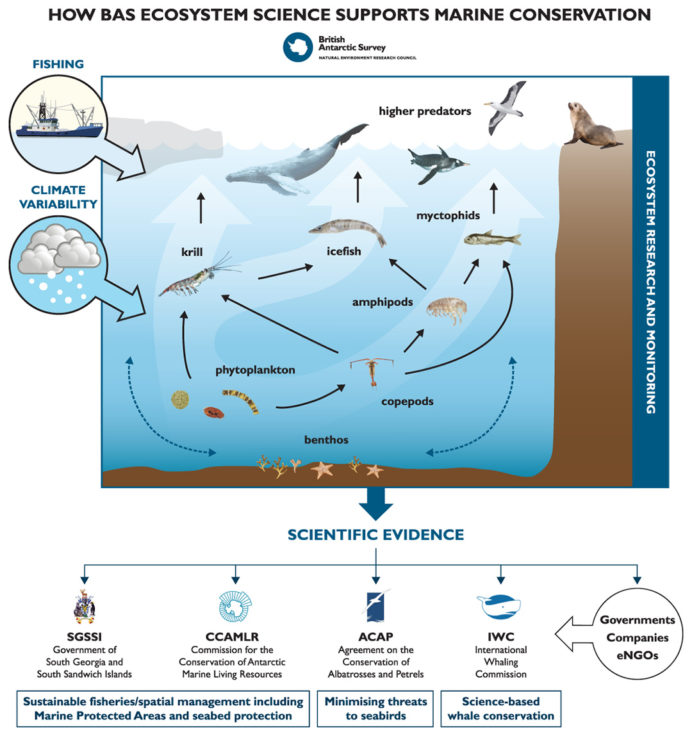Science meetings on conservation of Southern Ocean
Science meetings of the Commission for the Conservation of Antarctic Marine Living Resources (CCAMLR) take place over the next two weeks (starting 2 July 2018) at the Cambridge Headquarters of British Antarctic Survey.
More than 50 scientists from all over the world will be participating in workshops on behalf of CCAMLR, the international body responsible for conserving and sustainably managing marine resources in the Southern Ocean. These discussions are in preparation for the decision-making annual meeting of CCAMLR when delegates from the 25 member states meet in Hobart in November.
Dr Susie Grant (BAS), co-convener of the CCAMLR Workshop on Spatial Management, says:
“We are delighted to be welcoming CCAMLR scientists from around the world to Cambridge, to discuss research and analyses that contribute to the conservation and sustainable management of Southern Ocean ecosystems, biodiversity and resources. The Workshop on Spatial Management is an important opportunity to work on the data and methods needed to advise on the development of Marine Protected Areas in the Southern Ocean, and to monitor these areas into the future.”
Dr Phil Trathan, Head of Conservation Biology at BAS and Lead Ecological Adviser for the UK Delegation to CCAMLR, says:
“We are looking forward to discussing a broad range of scientific topics that will ultimately ensure the conservation and protection of the rich biodiversity of the Southern Ocean. Discussions will include technical issues related to the management of marine resources and the development of Marine Protected Areas designed to protect all ocean life – from the creatures that inhabit the seafloor, zooplankton and fish that live throughout the water column, as well as the iconic predators that include penguins, other seabirds, seals and other marine mammals”.

The two weeks of meetings in Cambridge follow directly on a week of discussions hosted by the Centre for Fisheries and Aquaculture Science (Cefas) at UEA in Norwich.
To find out more read our science briefings about Marine Protected Areas (MPAs) and krill fishing and conservation in the Southern Ocean
Ten facts about Southern Ocean ecosystems and conservation
Most Antarctic species live in the sea and most of those live on the seabed, e.g. 84% of species at the South Orkney Islands are marine, and 83% of these live on the seabed
Most Southern Ocean animals are endemic, meaning that they live nowhere else
The biomass of Antarctic krill is approximately equal to that of all humans presently on Earth but they outnumber humans by around 50,000:1
A female Antarctic krill can produce over 25,000 eggs over its lifetime. On average, only 2 eggs ever survive to adulthood
The fishery and breeding penguins generally catch Antarctic krill in or near the shallow waters around islands, but almost 90% of krill are found in the deeper waters of the open-ocean
Fish eat twice as much Antarctic krill as penguins, seals and whales combined
In 2000 a grey headed albatross travelled all the way around the Antarctic continent in just 46 days
Antarctic fur seals were almost wiped out on South Georgia in the 18th and 19th centuries. The population has now recovered but is facing new threats from environmental change
The world’s first high seas Marine Protected Area was established near the South Orkney Islands in 2009
Unchecked climate change could reduce krill habitat in the Scotia Sea by 20%